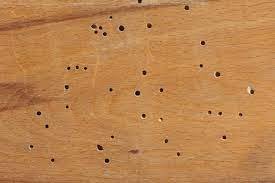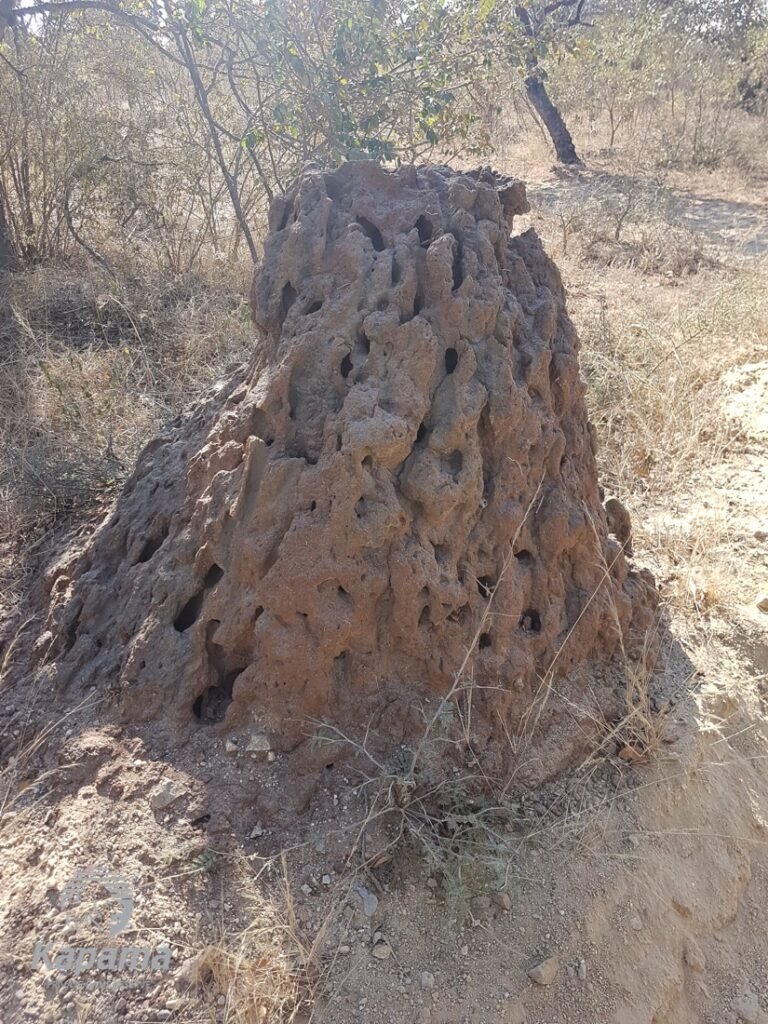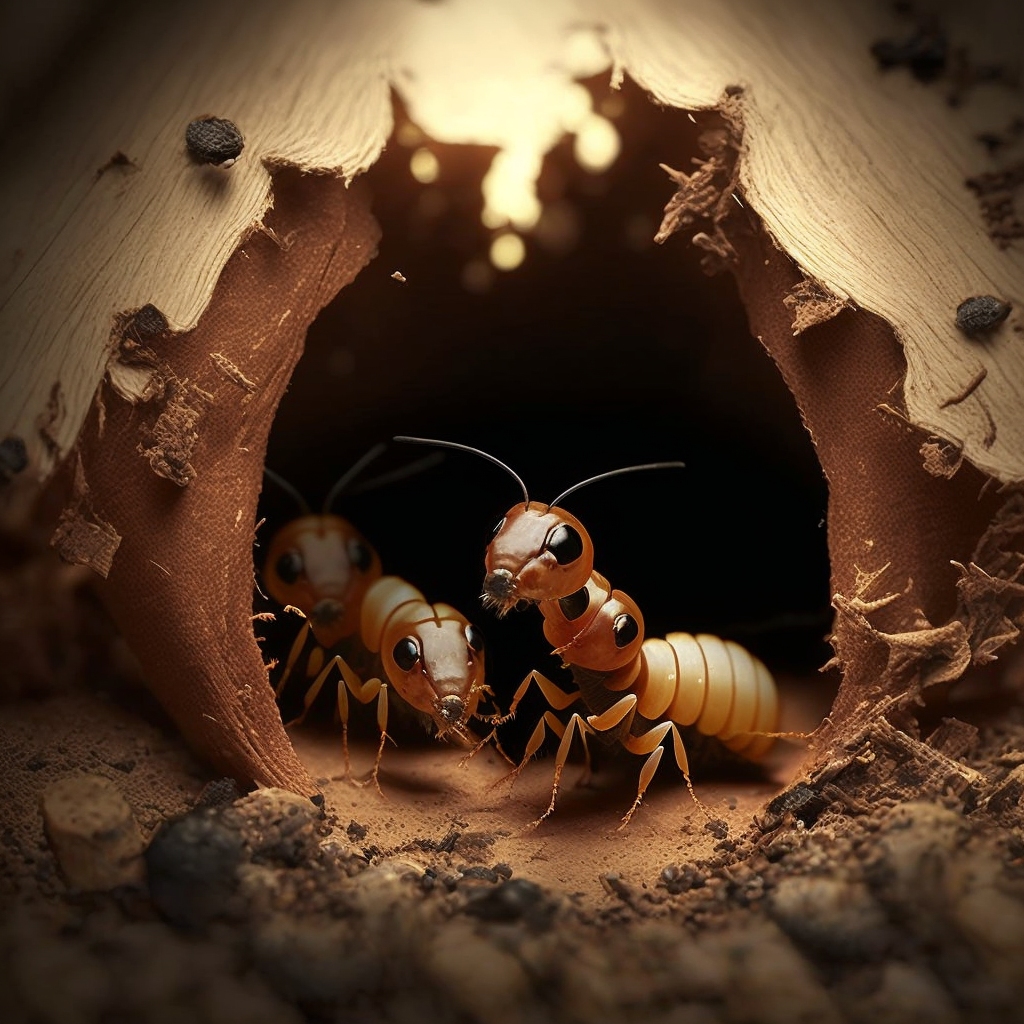What Do Termite Holes Look Like?
Seeing holes in a wooden building can be scary, especially if you don’t know what caused them. Several kinds of insects can make holes in wood.
Holes are a sign that termites have been in your home or on the wood around your property.
In this guide, we’ll look at what termite holes look like, how to find them, and how to get rid of them.
Do All Termites Leave Holes in Wood?

People think of termites as machines that eat wood, but only one species makes holes in wood to get out.
The Drywood Termite makes new colonies by boring into wood. Most of the time, you’ll find these termites in attics, garages, wood piles, and near trees.
Even though termites can make holes at any time, they do it most often when they are trying to mate. The mating season is in the spring and summer.
Even if there are no holes, that doesn’t mean there are no termites.
There are also a lot of subterranean termites in the united states, but they don’t make their nests out of wood.
Instead, they live in mud tubes and move around in them. These are thin, brown structures that are often found on floors and walls.
When Are Termite Holes Made?

Termites make exit holes when they leave their nest to start a new one. That is, the holes are made before the termites mate, so that the adults can leave the colony.
Most of them leave in the spring to breed and start new colonies. Termite holes are one of the first signs that termites are around, so you should always be on the lookout for them.
Do Termites Dig Holes in the Ground?

If you see something that looks like a tower made of dirt, it’s probably a termite mound. It is made by underground termites so they can control the temperature and humidity in their nests.
The soil acts as insulation, keeping the nest cool when it’s hot and dry when it’s raining a lot.
Termite mounds can be found in places like pastures, parks, and lawns that have a lot of space.
People often think they are ant hills because of how they look. At the bottom of a termite mound, there are several holes that lead to and from the underground nest.
Under the mound, the termites live in a network of tunnels and chambers.
When termites look for food, they dig through the soil to get to it. They must make sure that there is a connection to the ground that would let them go back to it.
This is done with the help of mud tubes, which connect the soil and their food.
What Do Termite Holes in the Ground Look Like?

The size of the opening is the best way to find a termite hole. Most termite holes are small and round, about the width of a pencil lead.
If the hole is bigger than that, termites probably didn’t make it. They are often close to each other and can be found in straight lines or patterns.
You can also look for mud tunnels that lead up to the hole to see if it was made by termites.
If you see a small hole that is connected to a mud tunnel, this is a good sign that you have termites.
Termite holes can do a lot of damage to your home if you don’t fix them, so it’s important to know if those holes are actually signs of an infestation.
Before assuming that small holes in the ground are just harmless bugs, check for mud tunnels or other signs of termites.
Do Other Insects Leave Holes in Wood?
Bugs other than termites can also damage wood. Other pests also make networks in wooden structures so they can nest, move around, and get water. Some common insects that can damage wood are:
- Carpenter Ants: These tiny black or red ants leave behind small, circular holes and sawdust. Carpenter ants make holes in wood about the size of a fingertip and brown stains.
- Powderpost Beetles: This group includes more than 70 different kinds of beetles that eat wood. They make tiny holes and can turn wood into dust very quickly.
- Bark Beetles: Bark beetles can easily chew through wood, as their name suggests. They also leave small white clumps behind on the wood.
Each type of wood-boring pest needs a different treatment plan. If you find holes in your wood that you can’t explain, you should have a professional pest control Team check it out.
How to Fix Termite Holes?

Unfortunately, termites are hard to find because they quickly fill up their holes. By the time the termites can be seen, they may have already built a big nest.
Most of the time, the damage is limited to one area, which is good. Termites usually take decades to do a lot of damage to the structure of a whole house.
The best way to figure out how bad the damage is is to have a professional do a termite inspection. An expert will pinpoint the main areas of infestation.
After finding the nests, getting rid of the termites, and making sure they don’t come back, repairs can begin. A professional inspection also keeps track of the infestation and any damage it caused.
You’ll need this if you want to claim the damage on your homeowner’s insurance. In some states, if you want to sell a house, you have to show proof that termites were removed and any damage was fixed.
Conclusion
Termite holes in the ground are small, round, and smooth. Most of the time, they are about the size of a dime or a penny, and they tend to be in groups.
Most of the time, termites that are tunneling underground make the holes.
These holes are found in places with a lot of moisture, like near ponds or in places with a lot of trees.
Some termites build big mounds above the ground, while others build complex networks of tunnels below.
If you think you might have termites in your yard, you should have a professional pest control worker check the area.
Termites can do a lot of damage to homes and other buildings, and once they are there, they can be hard to get rid of. If you find the problem early, you can avoid expensive repairs and a lot of trouble down the road.




